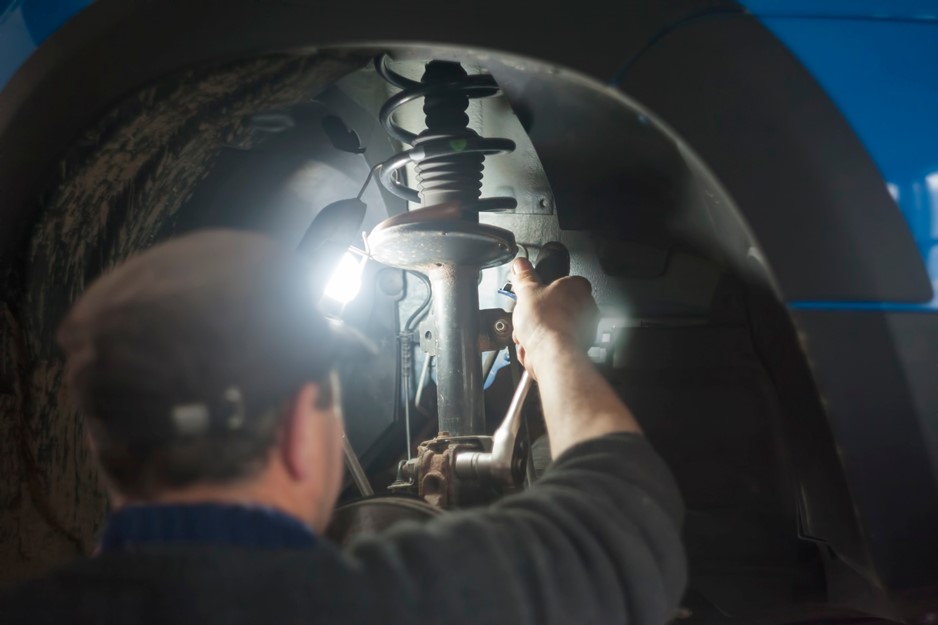Have you ever driven over a bump or a pothole in the middle of the road and your car handled it smoothly with you in control of the wheel? That’s mainly thanks to car shocks and struts. While many use the terms “shocks” and “struts” interchangeably, they are different parts of the car. Keep reading to learn the differences between the two, when to replace them, and how to maintain them. [1]
Difference between car struts and shocks
While struts and shocks help with the smoothness and handling of your car’s ride, both parts function a little differently. Shocks are parts of the suspension system that control the impact and rebound movement of your car’s springs, while struts are a major structural part of a suspension system and are used on the front end of nearly every front-wheel-drive vehicle. [2]
What is a car strut?
Similar to shock absorbers, struts perform a damping function that works internally like a shock absorber. Struts provide structural support for the suspension, including supporting the springs and keeping the tire aligned. They also bear a lot of the side load in the suspension. Because of all that struts do, they make your ride more comfortable and help with vehicle control, braking, steering, wheel alignment, and wear on other suspension parts. [2]
What is a car shock?
The main purpose of a car shock is to control spring and suspension movement. Shock absorbers have suspension that adjusts to the varying road conditions. The faster the suspension moves, the more the shock absorber resists. This helps reduce bounce, roll, sway, brake dive, and acceleration squat while driving. [2]
When to replace shocks and struts
A good general rule of thumb is to replace your shocks and struts about every 50,000 to 100,000 miles. Here are some additional signs that you might need to replace your shocks and/or struts and find a mechanic:
- Bumpy or rough ride
- Leaking fluid
- Uneven tire tread
- Unstable braking or turning [3]
Shocks and struts replacement cost
Shocks and struts aren’t particularly cheap to replace, but you shouldn’t have to do it that often. Because struts unfortunately come in pairs, you’ll need to replace them both. [4] A typical shock and strut replacement can cost between $450 and $1,100, depending on the type of vehicle suspension. [5]
How to maintain shocks and struts
Keeping your shocks and struts well maintained and dependably working helps the overall smoothness of your ride, prevents future problems, and reduces the cost of keeping your car in good condition. Here are the main things you can do to maintain your shocks and struts:
- Schedule regular maintenance inspections
- Keep tires inflated
- Avoid potholes and bumpy roads
- Avoid stop-and-go traffic
- Install shocks or struts in pairs when the time comes [6]
Sources:
[1] “What’s the Difference between Shocks and Struts?” tiresplus.com/blog/maintenance/difference-between-shocks-struts (March 25, 2020).
[2] “Shocks 101: Shocks vs. Struts,” monroe.com/technical-resources/shocks-101/shocks-vs-struts.html (accessed June 27, 2023).
[3] “How Do I Know When to Replace Shocks & Struts?” vatire.com/car-maintenance-tips/when-to-replace-shocks-and-struts (March 15, 2021).
[4] “How Much Does It Cost To Replace The Struts On A Car,” Dustin Hawley, jdpower.com/cars/shopping-guides/how-much-does-it-cost-to-replace-the-struts-on-a-car (Dec. 25, 2022).
[5] “Shocks and Struts Replacement Cost,” Richard McCuistian, carparts.com/blog/shocks-and-struts-replacement-cost (accessed June 27, 2023).
[6] “6 Tips for Maintaining Your Shocks and Struts,” Eric Riddles, customcompleteautomotive.com/6-tips-for-maintaining-your-shocks-and-struts (June 2, 2021).
Disclaimer;
The information included here is designed for informational purposes only. It is not legal, tax, financial or any other sort of advice, nor is it a substitute for such advice. The information may not apply to your specific situation. We have tried to make sure the information is accurate, but it could be outdated or even inaccurate in parts. It is the reader’s responsibility to comply with any applicable local, state or federal regulations. Nationwide Mutual Insurance Company, its affiliates and their employees make no warranties about the information nor guarantee of results, and they assume no liability in connection with the information provided. Nationwide and the Nationwide N and Eagle are service marks of Nationwide Mutual Insurance Company. © 2023 Nationwide

